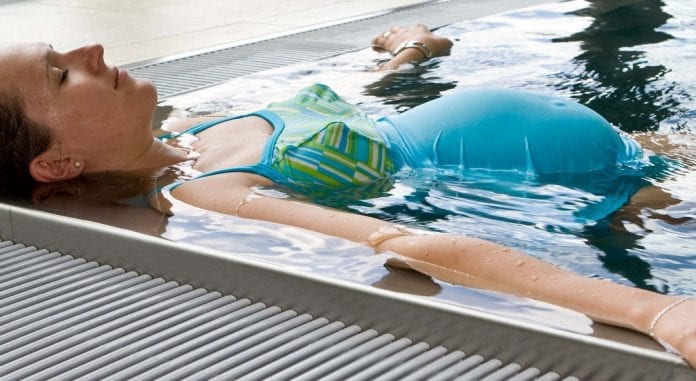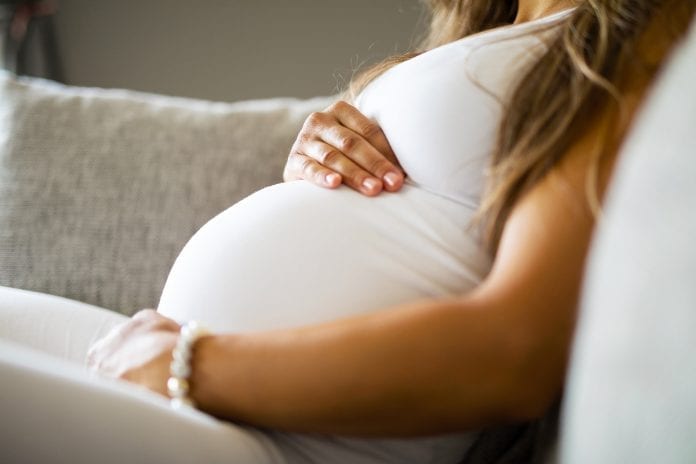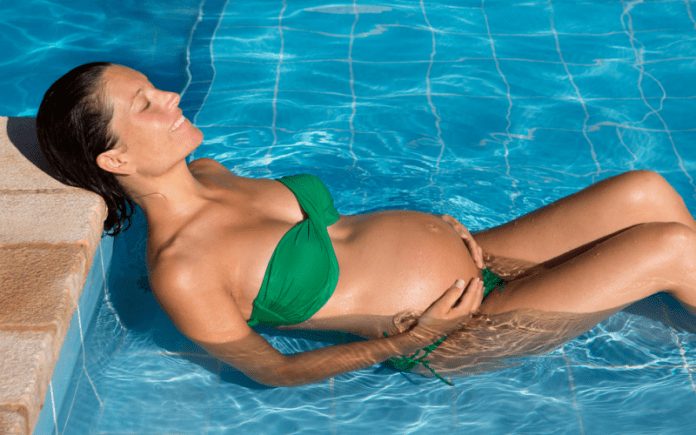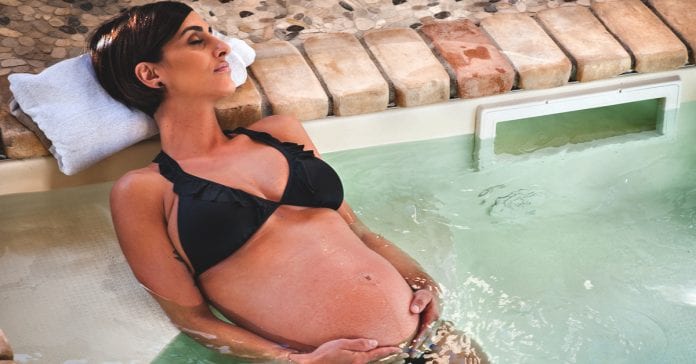Pregnancy brings a lot of emotions and challenges, which could send any sane person looking for comfort. If you have a hot tub, this is one place you can usually go to relieve stress and think clearly. Unfortunately, many pregnant women also worry about the possible dangers of using this means of relaxation and therapy. Here we look at seven ways which can take the worry out of enjoying a hot tub whilst pregnant.
1. Avoid hot tubs during 1st semester

Most of the potential dangers of using hot tubs when pregnant come from overheating. During the early stages especially, this should be avoided. Research has shown that raising the body temperature for more than 10 minutes during the first 7 weeks can result in a range of birth defects in the baby’s neural tubes, which can lead to spina bifida. Also, the early stages of pregnancy are when women are most vulnerable generally, as the body adapts to its new way of working. Sudden raising or lowering of the body temperature can cause the body to take action to protect itself, which may not be in the best interests of the pregnancy. Avoid hot tubs for the first 12 weeks.
2. Keep the temperature down

Temperature is vital to keeping mother and baby safe during pregnancy, and shouldn’t be allowed to vary too much one way or the other. When taking antenatal classes, for instance, using warm water for exercise is recommended; however, the temperature of this should only be 32° celsius, as exercising naturally pushes temperature up. For hydrotherapy pools, the maximum recommended temperature is 35° celsius; slightly less than the normal body temperature of 37 degrees. One of the selling points of hot tubs is that their temperature can be turned up to as high as 40°; this is clearly dangerous for pregnant mothers and should be avoided. If your tub has good temperature control, make sure the water is no hotter than 35 degrees celsius. We cover just a few points about whether you should use hot tubs during pregnancy, this website explains more about the benefits & drawbacks.
3. Use for ten minutes only

Submerging the body in warm water changes the blood supply, as the heat closes the smallest vessels nearest the skin; this is why we get goosebumps, as the skin contracts. Even if the water temperature is a manageable 35° celsius, this is still much hotter than the air most people are used to, and also the skin cannot regulate the body’s temperature by producing sweat. For these reasons, any hot tub use when pregnant should be kept to 10 minutes maximum. Studies of pregnant women in all trimesters have shown that raised temperatures for any longer than this carry a number of risks, from abnormalities in the early stages to miscarriages in the third trimester. Even when dipping feet into heated water, stick to the 10 minute rule.
4. Take practical steps
Some pregnant mothers compare hot tubs to baths, in that both are relaxing and use water which might otherwise be considered really quite hot. The main difference is that, in a bath, much of the body is actually still exposed to the air, and so can expel excess heat, or not be exposed to too much cold. Also, when people get in the bath, it immediately starts to cool down. With a hot tub, most of the body is immersed in hot water during normal use; it is therefore a good idea for pregnant women to sit in only a few inches of water (by sitting on something to raise the body out of the water), to keep at least the knees and shoulders exposed. Also, don’t sit next to the water inlet, which recycles water at a higher temperature.
5. Keep water disinfected

All modern hot tubs come with chemical treatments to kill harmful microbes; often these are housed in floating dispensers, which can be changed after a certain number of uses or period of time. During pregnancy, it is vital that you keep an eye on the chemical composition of the water in your hot tub, so that germs aren’t allowed to breed. The most common chemicals used as germicides are chlorine and bromine; testing the levels of these is the safest way of ensuring that microbes don’t have an environment in which to thrive. As a rule of thumb, levels of chlorine should be between 2 and 4 parts per million (ppm), and bromine between 4 and 6 ppm. Also, the pH level of your water should be between 7.2 and 7.8.
6. Avoid if feeling unwell
In the normal course of events, people are tempted to soak in hot tubs when they feel a little under the weather. Shivers, aches and pains can soon melt away after a nice, long soak in the hot tub. However, for pregnant women, the opposite is true; hot tubs should only be used if the mother is feeling well, fit and healthy. Apart from the risks of overheating, using a hot tub for any length of time reduces blood pressure significantly, which can cause fainting. It is also possible that using a hot tub to ease aches and pains can mask health problems which really should be addressed; and there is also the real possibility that you may fall asleep in the tub, which should be avoided at all costs.
7. Have someone with you

Finally, a good tip for using a hot tub when pregnant is to have someone else with you. This may not feel like something you want to do; many expectant mothers do not feel too comfortable about their bodies, especially during later stages. However, taking a hot tub with a loved one makes excellent sense, as they can help you get in and out, keep an eye on the time, and be of assistance should you suddenly feel unwell. It might also help to have someone to talk to.
In conclusion, a hot tub can still be something which pregnant mothers can enjoy, if used properly. The time spent may be a little less than you’d like, and the water a bit cooler, but many of the therapeutic benefits of tubs still apply; these are likely to be even more appreciated than normal. A ten minute hot tub once a day can be something to look forward to, and should be perfectly safe for both mother and baby.









